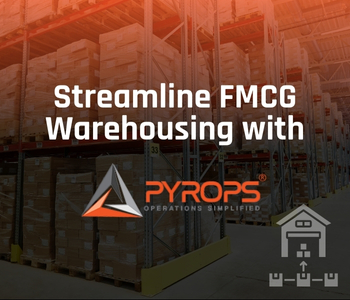The global supply chain has become a complex web of interdependencies, making it increasingly vulnerable to disruptions. From geopolitical tensions and natural disasters to unforeseen factory shutdowns, the ripple effects of these events can cripple operations. But what if you could predict and mitigate such risks before they cause chaos? Enter the early warning system—a game-changer for supply chain resilience.
What Is an Early Warning System for Supply Chains?
An early warning system (EWS) leverages data analytics, artificial intelligence (AI), and real-time monitoring to identify potential risks in the supply chain. By aggregating data from various sources—such as weather forecasts, political analyses, and supplier performance reports—it provides actionable insights to businesses. These systems act like a radar, offering companies the foresight to anticipate disruptions and take preemptive measures.
How Does It Work?
The backbone of an EWS is predictive analytics. Here’s a breakdown of its core functionalities:
- Data Collection: The system gathers real-time data from multiple touchpoints, including IoT devices, satellites, and news feeds.
- Risk Assessment: AI algorithms analyze this data to detect anomalies and flag potential disruptions.
- Alerts: Companies receive timely alerts about threats, such as delayed shipments, supplier insolvency, or severe weather.
- Mitigation Strategies: Based on the insights, businesses can activate contingency plans, such as rerouting shipments or finding alternative suppliers.
Why Supply Chain Resilience Is Non-Negotiable
A single weak link in the supply chain can lead to cascading failures, affecting revenue, reputation, and customer satisfaction. In today’s volatile business environment, resilience is not just a competitive advantage but a necessity.
Consider the following statistics:
- Supply chain disruptions cost global businesses approximately $1 trillion annually.
- 75% of companies experienced a major disruption in the last five years.
- The average cost of a single supply chain disruption is $5 million.
Given these stakes, early warning systems are becoming indispensable.
Real-World Applications
Several industries are already reaping the benefits of early warning systems:
- Automotive: Car manufacturers are using EWS to monitor raw material shortages and manage just-in-time inventory models.
- Pharmaceuticals: Drug companies employ these systems to ensure timely delivery of critical components for lifesaving medications.
- Retail: Retail giants like Walmart use predictive analytics to prepare for sudden shifts in demand or supplier delays.
Key Benefits of Early Warning Systems
- Proactive Risk Management: Early alerts allow companies to address issues before they escalate into major problems.
- Enhanced Decision-Making: Access to real-time data empowers supply chain managers to make informed decisions quickly.
- Cost Savings: By avoiding disruptions, businesses can reduce financial losses associated with delays and stockouts.
- Customer Satisfaction: A resilient supply chain ensures timely deliveries, boosting customer trust and loyalty.
Challenges in Implementation
While the benefits are undeniable, implementing an EWS comes with its own set of challenges:
- Data Integration: Many companies struggle to consolidate data from diverse sources.
- High Initial Costs: Advanced systems require significant investment in technology and infrastructure.
- Training: Employees must be trained to interpret and act on the insights provided by the system.
The Future of Supply Chain Resilience
The adoption of early warning systems is expected to grow as businesses recognize their value. Future developments may include:
- Greater integration of AI and machine learning for more accurate predictions.
- Improved interoperability between EWS platforms and existing enterprise resource planning (ERP) systems.
- Broader adoption of blockchain technology for increased transparency and trust across the supply chain.
Conclusion
The complexity of modern supply chains demands innovative solutions, and early warning systems are leading the charge. By offering businesses the ability to predict, prepare for, and mitigate disruptions, these systems are revolutionizing supply chain management.







